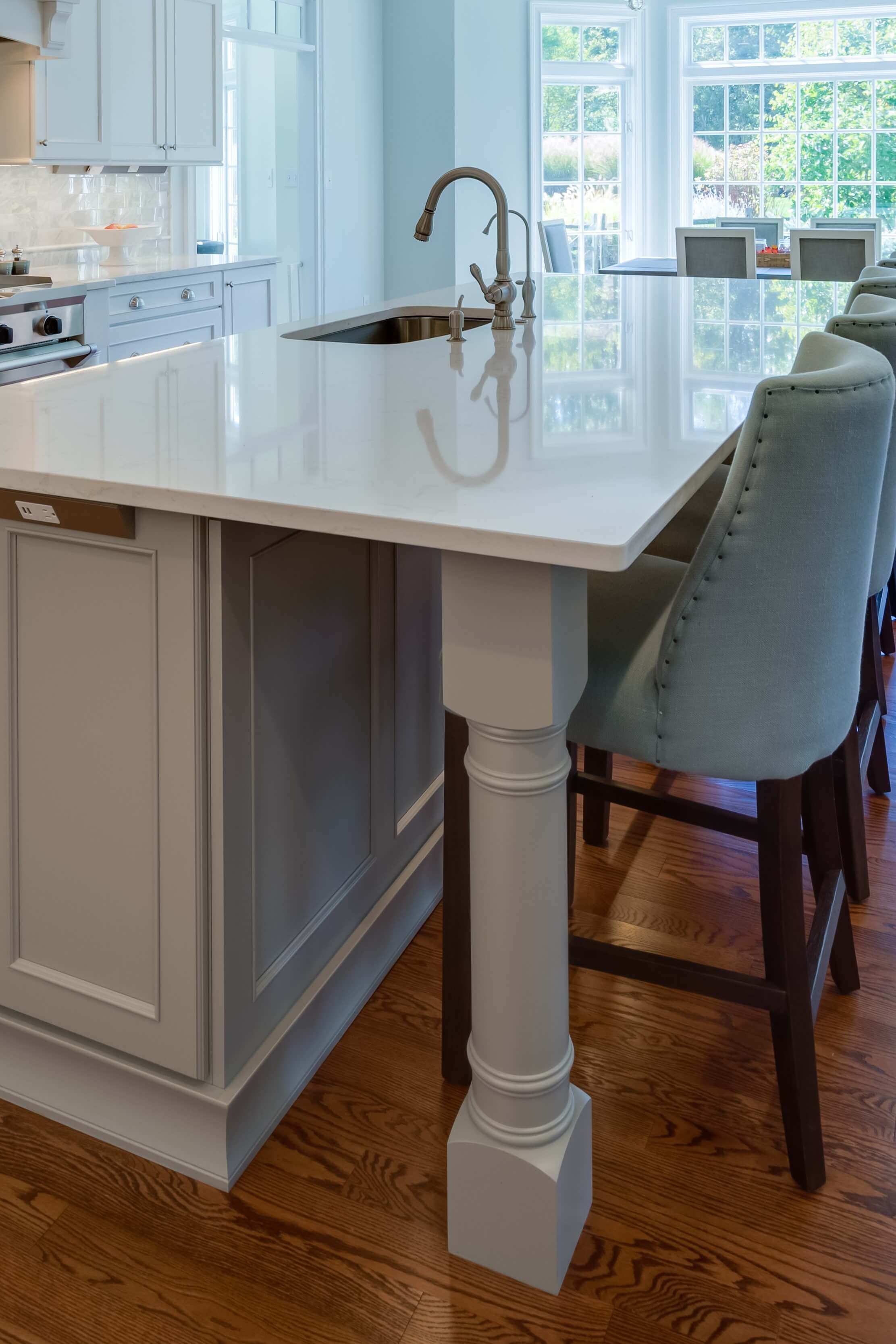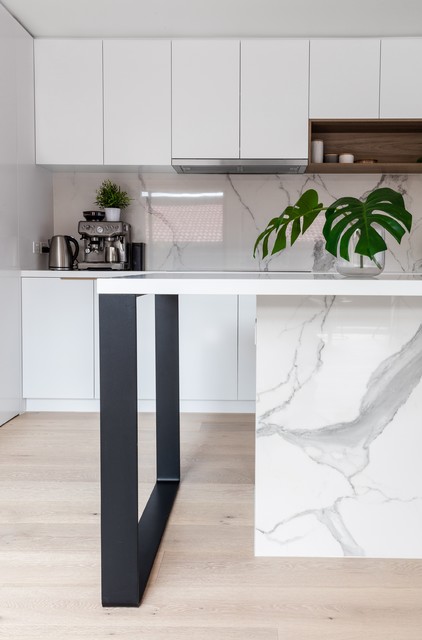How to Set Up a Kitchen Island Leg for Maximum Stability and Style
How to Set Up a Kitchen Island Leg for Maximum Stability and Style
Blog Article
Discovering the Crucial Attributes of a Kitchen Area Island Leg for Your Culinary Space
The kitchen island functions as a central hub in any kind of culinary space, and the selection of leg style is crucial in boosting both its performance and visual allure. Comprehending the vital features of cooking area island legs-- including product choices, design styles, and stability factors-- can dramatically affect the overall experience within the cooking area. As we explore these components, we will reveal how thoughtful modification and accessories can boost your kitchen island from a plain utility to a striking focal point. What specific factors to consider should be prioritized to accomplish this equilibrium?
Importance of Kitchen Area Island Legs
Kitchen area island legs play an important duty in both the capability and appearances of a kitchen area. They not just support the weight of the island however likewise boost the overall design, contributing to the kitchen area's aesthetic appeal. The option of legs can determine the style of the kitchen area, be it contemporary, traditional, or rustic.
Functionally, robust and appropriately created legs make certain security, permitting the safe use of the island for various tasks such as cooking, dining, or entertaining. Solid legs prevent wobbling and shifting, offering a trustworthy surface area for day-to-day tasks.
Additionally, the elevation and placement of the legs can affect the comfort level for those seated at the island. A well-considered height can accommodate bar stools or chairs, advertising an inviting atmosphere for events.
In enhancement to these functional considerations, kitchen area island legs can function as a focal point in the room (kitchen island leg). Attractive or uniquely made legs can boost the layout visual, making the island a centerpiece. Therefore, choosing the right kitchen island legs is necessary for balancing form and function in any kind of cooking space
Product Options for Legs
Picking the proper product for kitchen area island legs considerably influences both toughness and layout. Common product options consist of metal, timber, and stone, each offering unique benefits.
Wood is a popular selection because of its heat and adaptability. It can be easily tailored to match various style styles, from rustic to modern. Hardwoods like oak and maple give superb strength and long life, while softer woods can be extra prone to damage.
Steel legs are preferred for their streamlined, contemporary visual. kitchen island leg. Stainless steel and light weight aluminum are not only robust yet also resistant to rust and rust, making them perfect for cooking area environments. They can produce a commercial look and are usually available in different coatings to complement various other kitchen aspects
Rock legs, such as granite or marble, include an element of high-end and security. While heavier than other products, they supply extraordinary resilience and can hold up against substantial weight. However, they may require additional support to make sure correct equilibrium.
Ultimately, the selection of material should straighten with both practical requirements and the total style vision of the kitchen space, making certain that the island legs improve both energy and appearances.
Style Designs to Think About
What design styles should be taken into consideration when choosing legs for a cooking area island? The choice of leg design considerably affects the general visual of your culinary area. For a contemporary kitchen area, sleek and minimalistic leg layouts, such as stainless steel or geometric forms, can enhance the contemporary appeal, supplying a tidy and clean appearance.
On the other hand, standard cooking areas take advantage of traditional designs such as turned or carved wood legs, which include warmth and personality. These alternatives typically include intricate details that match classic furnishings. For a rustic atmosphere, take into consideration legs made from reclaimed timber or wrought iron, which check these guys out bring an organic, my response earthy quality to the space.
If you lean in the direction of a commercial theme, robust metal legs with a troubled coating might be excellent, offering an edgy yet sophisticated touch. In addition, farmhouse style kitchens can integrate chunky legs that stimulate a feeling of strength and homeliness.

Elevation and Stability Elements
The elevation and security of a kitchen island are essential aspects that straight influence its performance and customer experience. An optimal kitchen island leg must give sufficient height to fit a selection of tasks, from food preparation to informal eating. Normally, kitchen area islands stand in between 36 to 42 inches high, aligning with basic counter and bar heights. This variety makes sure convenience for users while doing various tasks, therefore improving the total use of the space.
Security is equally crucial, specifically as kitchen area islands often serve as focal points in culinary atmospheres. The leg's add-on to the island's base should be safe and secure, making certain durability and resilience versus the wear and tear of everyday use.
Modification and Accessories
Customization options and devices for kitchen island legs can significantly enhance both the visual charm and capability of the room. Homeowners can select from a variety of products, consisting of metal, wood, and rock, permitting smooth combination with existing kitchen area decoration. The selection of finish-- be it a natural discolor, paint, or powder layer-- more customizes the look, making certain that the island complements the general style style.
In enhancement to material and coating, property owners may likewise discover the incorporation of accessories he has a good point such as decorative braces, flexible feet, or integrated shelving. Braces can use additional assistance while adding to a modern or rustic visual. Adjustable feet are particularly useful for uneven flooring, guaranteeing the island remains secure and level, which is important for both safety and security and functionality.

Final Thought
In conclusion, cooking area island legs serve a crucial function in giving security and enhancing the total visual of the culinary room. Customization choices and accessories can elevate the kitchen area island, making it a distinct focal factor within the home.
The cooking area island offers as a central center in any culinary room, and the selection of leg style is crucial in boosting both its performance and aesthetic appeal. Recognizing the necessary functions of kitchen area island legs-- consisting of material choices, design styles, and stability factors-- can significantly affect the overall experience within the kitchen area.Cooking area island legs play a crucial function in both the functionality and aesthetic appeals of a kitchen area room.What design styles should be considered when choosing legs for a cooking area island?In verdict, kitchen area island legs offer a vital role in supplying security and enhancing the total aesthetic of the cooking room.
Report this page